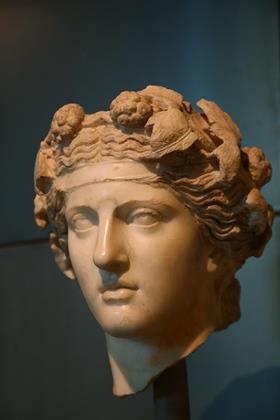Folds in clothing in a depiction of Hindu gods, the fashion for moustaches in pre-Angkorian Cambodia and the possibility that a seventh century sculptor would leave marks resembling those from a power drill are among the pieces of expert evidence discussed in a mammoth ruling on an antiquities fraud case.
In a 159-page illustrated judgment in Qatar Investment & Projects v Eskenazi, Mr Justice Jacob found that seven supposedly ancient objects sold by a London dealer to members of the Qatari royal family for a total of $4.9m were of modern origin. The ruling followed hearings in July at which the objects, including a head of Dionysus purportedly dating from the period of Greek rule in Central Asia, were exhibited in London's Rolls Building.

Proceedings were brought by a Qatari company and Sheikh Hamad Bin Abdullah Al Thani alleging breach of contract, misrepresentation and the tort of negligence against John Eskenazi Limited and its owner John Eskenazi. A claim of fraud was made over the most expensive object in the collection, a sandstone statue representing Hindu deities which the sales invoice stated originated in Indochina in the late seventh century.
According to the judgment, the defendants conceded in closing arguments that one item, a 'serpent bracelet', was, on the balance of probabilities, not authentic. However they contested the claimants' allegations of misrepresentation and both sides called art historians, materials scientists and other experts. The judge commended Sheikh Hamad on his evidence, while noting that some parts 'had clearly been over-lawyered': at one stage, the sheikh had to ask the meaning of the term 'unequivocal assurance' in his own witness statement.
The court heard that the sandstone 'Hari Hara', a statue which melds the gods Vishnu and Shiva into a single entity, would, if genuine, 'be a very important object indeed'. However no information about its provenance was provided at the time of the sale. Disclosure to the court revealed an invoice suggesting it had been shipped from Hanoi as a 'garden ornament' valued at $575.
Experts noted several anomalies in the 120-cm high work. Two pages of the judgment deal with the statue's sampot (a type of sarong). An expert described the depiction of two small pieces of fabric falling symmetrically over the front of the thighs as 'against all plausibility'. The depiction of the figure's moustache and navel were also unusual. Meanwhile the erosion on the statue's surface was 'characteristic of the use of an acid etchant and a high-speed machine polisher'.
Rejecting the argument that the evidence of modern working could be explained by restoration, the judge said: 'In my view, when looking at art history, provenance or materials science - both separately and in the round - I am satisfied that the Hari Hara is not authentic.'
On other objects, including the head of the Greek god Dionysus, he found the case for inauthenticity 'compelling'. The most probable explanation for the absence of weathering on the head of a Bodhisattva, is 'recent manufacture', he concluded.
However while the claiments proved that the objects were not authentic and that Eskenazi did not have reasonable grounds for his unqualified opinion that they were genuine, he said the claimants had failed to establish fraud.
The judge ruled that the Qatari company is entitled to recover the prices paid. It is also entitled to damages for breach of the implied term that Eskenazi honestly and reasonably believed that the objects were of ancient origin. 'Submissions as to the precise form of order will be taken at a consequentials hearing to be held in due course,' the judge concluded.
This article is now closed for comment.

























2 Readers' comments